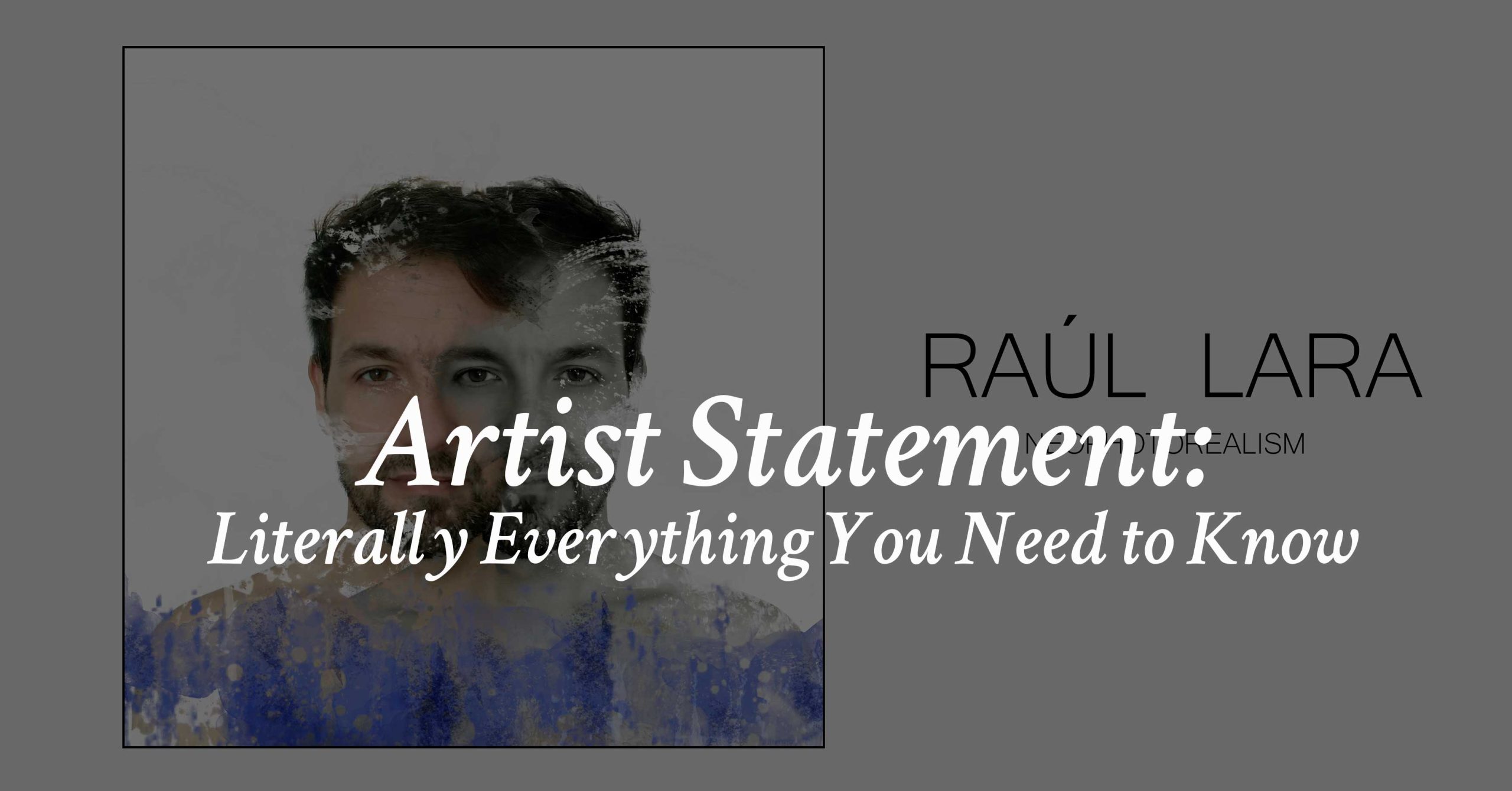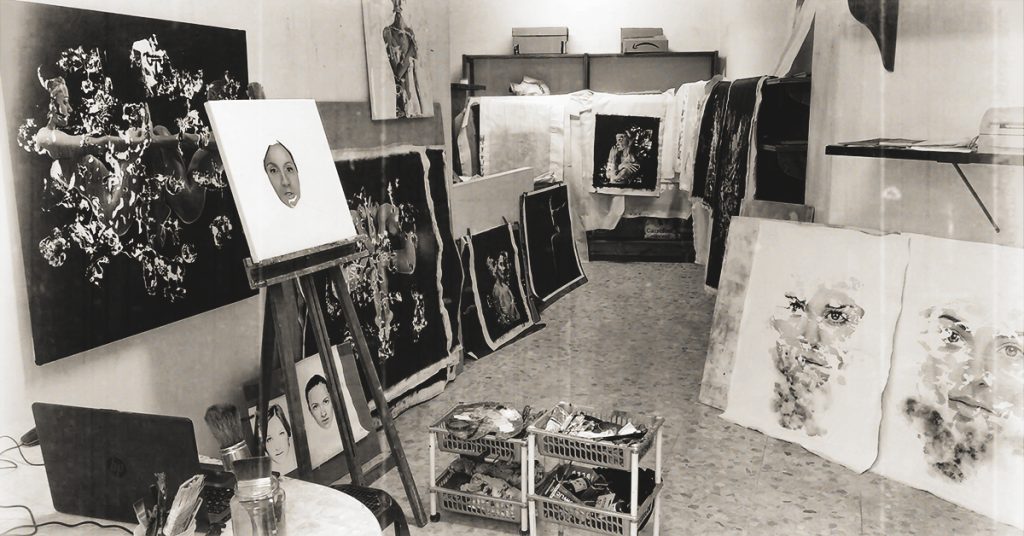
Introduction
In the realm of art, where creativity reigns supreme, there exists a crucial tool that empowers artists to connect with their audience and unveil the essence of their work: the artist statement. This concise yet powerful narrative serves as a window into the artist’s mind, revealing their motivations, inspirations, and the unique perspective that shapes their creations.
Defining the Artist Statement
An artist statement is a brief, written explanation of an artist’s creative process, intentions, and the themes that resonate throughout their work. It’s a chance for artists to step out of the shadows and engage with their audience on a deeper level, providing a context for their creations and inviting viewers to embark on a journey of shared understanding. An artist statement is not a biography, a resume, or a list of achievements. It is a personal reflection that reveals the artist’s unique voice, vision, and values. An artist statement serves as an expression of intent, outlining the artist’s objectives, motivations, and influences.. It is a tool that can help the artist communicate with curators, critics, collectors, and potential collaborators.
Benefits of a Well-Written Artist Statement


A well-crafted artist statement holds immense value for artists of all levels and disciplines. It serves as a powerful tool for:
Establishing Artistic Identity through Your Artist Statement
It helps artists define their unique voice and position themselves within the art world. By articulating their creative vision, process, and influences, artists can differentiate themselves from others and create a distinct brand identity. This can help them attract the right audience, collaborators, and opportunities that align with their artistic goals.
Connecting with Audiences: The Power of Your Artist Statement
It bridges the gap between the artist and their audience, allowing viewers to grasp the deeper meaning behind their work. By providing context, insights, and emotions behind their creations, artists can engage their audience on a deeper level and foster a sense of empathy and appreciation. This can help them build a loyal fan base, receive constructive feedback, and inspire others to create.
Attracting Opportunities with an Impactful Artist Statement
It can open doors to collaborations, exhibitions, and potential clients, enhancing an artist’s professional trajectory. By showcasing their artistic vision, skills, and achievements, artists can demonstrate their value proposition to potential partners, galleries, and collectors. This can help them secure funding, grants, residencies, and other career-advancing opportunities that can take their art to the next level.
Inspiring Artistic Growth Through the Artist Statement
The process of writing an artist statement fosters self-reflection, leading to deeper understanding of one’s artistic motivations and intentions. By examining their creative process, goals, and challenges, artists can gain new insights into their work and identify areas for improvement. This can help them refine their artistic voice, experiment with new techniques, and push the boundaries of their creativity.
Understanding the Essence of an Artist Statement


A compelling artist statement is not merely a laundry list of techniques or materials used; it’s a narrative that breathes life into the artist’s work. It should:
Focus on the Art: The Core Element of Your Artist Statement
While personal anecdotes can provide context, the focus should remain on the artwork itself and the ideas it conveys. The statement should describe the artist’s creative vision, the themes and concepts that inspire them, and the emotions they seek to evoke in their audience. It should also highlight the unique qualities of the artist’s work that set it apart from others and make it memorable.
Reflect Artistic Growth
Identify recurring themes or concepts that have evolved over time, demonstrating the artist’s creative journey. The statement should show how the artist’s work has developed over time, how they have experimented with new techniques and materials, and how they have responded to feedback from their audience. It should also reflect on the challenges the artist has faced and how they have overcome them.
Emphasize Inspirations
Share the influences that have shaped the artist’s perspective and informed their creative process. The statement should describe the artists who have inspired the artist, the art movements that have influenced them, and the cultural and social contexts that have shaped their work. It should also explain how the artist has incorporated these influences into their own unique style.
Articulate Creative Approach
Explain the artist’s methodology, materials, and the specific techniques employed to bring their vision to life. The statement should describe the artist’s creative process, from the initial idea to the finished work. It should also explain the materials and techniques the artist has used to create their work, and how these choices have contributed to the overall effect. By articulating their creative approach, the artist can help their audience understand the complexity and depth of their work.
Crafting a Compelling Artist Statement
Embarking on the journey of crafting an artist statement can be both exciting and daunting. Here’s a step-by-step guide to help you create a compelling piece:
Brainstorming
This is the stage where you can let your creativity run wild and jot down anything that comes to mind. Think about the questions that your audience might have about your work, such as: What is your artistic vision? What are the influences behind your style and technique? What are the emotions or messages that you want to convey?
Structure and Flow
Once you have a list of ideas, you can start to arrange them into a logical order. A common structure for an artist statement is: Introduction, Body, and Conclusion. The introduction should capture the reader’s attention and provide a brief overview of your work, the body should expand on the main points and explain how your work reflects your artistic vision and the conclusion should summarize your statement and leave a lasting impression.
Vivid Language
The language you use in your statement should reflect the tone and mood of your work. Avoid using vague or generic words that could apply to any artist. Instead, choose words that are specific, vivid, and expressive. For example, instead of saying “I paint landscapes”, you could say “I capture the dynamic interplay of light and shadow on the natural scenery”.
Personal Anecdotes
Personal anecdotes can help you connect with your audience and show your personality. However, they should not distract from the focus of your statement, which is your work. Use anecdotes sparingly and only when they illustrate a relevant point. For example, you could share a story of how you discovered your passion for art, or how a particular experience influenced your work.
Proofreading and Revision
The final step is to polish your statement and make sure it is error-free and impactful. Read your statement aloud and listen for any awkward or unclear sentences. Check your grammar, spelling, and punctuation. Ask someone else to read your statement and give you honest feedback. Revise your statement until you are satisfied with the result.
Common Mistakes to Avoid on an Art Statement


writing an art statement can be challenging, especially if you are not used to expressing yourself in words. Here are some common mistakes that you should avoid on an art statement:
- Being too vague or abstract: Avoid using general or ambiguous terms that do not convey anything specific about your work. For example, do not say that your work is “about life” or “inspired by nature”. Instead, try to be more concrete and precise about what your work means to you and what you want to communicate to the audience.
- Being too long or verbose: Avoid writing an art statement that is too lengthy or wordy. A good art statement should be concise and clear, usually no more than one page. Do not include unnecessary details or information that is not relevant to your work. Use simple and direct language that is easy to understand and follow.
- Being too humble or arrogant: Avoid being too modest or too boastful about your work. Do not downplay your achievements or skills, but also do not exaggerate them. Be honest and confident, but not arrogant or pretentious. Acknowledge your influences and sources, but also highlight your originality and creativity.
- Being too personal or impersonal: Avoid being too emotional or detached from your work. Do not use your art statement as a diary or a therapy session, but also do not write it as a dry and boring report. Find a balance between expressing your personality and emotions, and maintaining a professional and objective tone. Show your passion and enthusiasm, but also your critical and analytical thinking.
Artist Statement Examples


Here are some artist statements that we have selected for you to use as inspiration while creating your own.
These artist statements showcase a variety of styles, tones, and approaches to writing about art. Some are poetic, some are humorous, some are philosophical, and some are personal. However, they all share a common trait: they are authentic and engaging. They reveal the artist’s unique voice, vision, and values, and invite the audience to connect with their work on a deeper level.
By studying these examples, you can learn how to craft an artist statement that reflects your own artistic journey and resonates with your audience. Remember to stay true to your own voice and style, and to use active voice and vivid language to bring your words to life.
Showcasing Your Artist Statement
Once you’ve crafted your artist statement, it’s time to showcase it effectively:
Online Presence
- Integrate your statement into your website, portfolio, and social media pages. Make sure it’s easy to find and read.
- Add images or videos of your artwork to complement your statement and provide visual context.
Exhibition Display
- Include your statement alongside your artwork in exhibitions, allowing visitors to delve deeper into your creative process.
- Use clear and legible fonts, and make sure your statement is large enough to read from a distance.
- Consider adding QR codes or links to your website or social media pages for visitors to learn more about you and your work.
Printed Materials
- Consider incorporating your statement into printed materials, such as brochures or press releases.
- Use high-quality paper and printing to make your statement stand out.
- Make sure your statement is concise and easy to read.
Remember to use active voice and make your statements actionable. By following these tips, you can effectively showcase your artist statement and attract the right audience and opportunities.
Conclusion
An artist statement is more than just a piece of writing; it’s a testament to the artist’s passion, dedication, and unique perspective. It’s a tool that empowers artists to connect with their audience on a deeper level, fostering meaningful dialogue and appreciation for their art. By taking the time to craft a compelling artist statement, artists can not only enhance their own artistic journey but also elevate their presence in the art world.
FAQs
Q1: How long should an artist statement be?
The length of an artist statement can vary, but a concise and focused statement of around 200 to 300 words often strikes the right balance.
Q2: Can an artist statement evolve over time?
Absolutely! An artist statement is a reflection of the artist’s journey, and it’s natural for it to evolve as their creative voice matures.
Q3: Should an artist statement include technical details?
While it depends on the audience, artists often find a balance by providing enough technical insight to enhance understanding without overwhelming the reader.
Q4: Are there templates for crafting artist statements?
While templates can offer guidance, it’s crucial to infuse personal flair and authenticity into the statement. Avoid generic formulations for a more impactful result.
Q5: How often should an artist update their statement?
As a general guideline, artists may consider revisiting their statements annually or whenever a significant shift in their artistic direction occurs.
Q6: Where can I find resources for crafting an artist statement?
Numerous resources are available to help you craft an effective artist statement. Online articles, books, and workshops can provide guidance and inspiration.




